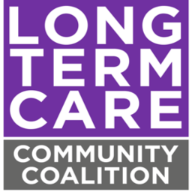Certified Nurse Aide (CNA) training & certification requirements vary considerably across the U.S. In some states, the requirements go beyond the federal minimum while in other states requirements are nearly identical to the federal standards.
This page displays California CNA Requirements as of February 2023.
To see requirements in other states, visit nursinghome411.org/cna-reqs.
California CNA Requirements
- Eligibility/Screening Requirements
- 16 years old.
- Criminal record clearance.
- Education & Training Requirement
- Individuals must complete a state approved nurse aide training and competency evaluation program.
- Testing Requirement
- Individuals must pass both a written and skills test.
- Renewal & In-Service Requirements
- 24 hours of in-service training required.
- An application for renewal is considered complete when the correct fee is received, and the accompanying documentation verifies completion of required twenty-four (24) hours of in-service training or continuing education per year for a total of forty-eight (48) hours within the two (2) year renewal period. The in-service training and continuing education shall include multiple topics and shall also address areas of weakness as determined by a nurse assistant’s performance reviews, areas of special needs of the patients, including those with cognitive needs, and areas wherein the facility received deficiencies related to patient care following the last licensing survey.
- Hours
- 100 clinical hours.
- 50 classroom hours.
- Curriculum
- (1) Module 1. Introduction.
- (A) Role and responsibilities of the Certified Nurse Assistant.
- (B) Title 22, division 5, California Code of Regulations, overview.
- (C) Requirements for nurse assistant certification.
- (D) Professionalism.
- (E) Ethics and confidentiality.
- (2) Module 2, Patients’ Rights.
- Each nursing assistant applicant shall be instructed in patients’ right as specified in title 22, California Code of Regulations section 72527 and in sections 1599.1, 1599.2, and 1599.3 of the Health and Safety Code and in Title 42, Code of Federal Regulations Part 483, Sections 483.10, 483.12, 483.13 and 483.15. The provisions of these sections are incorporated by reference into this regulation.
- (3) Module 3. Interpersonal skills.
- (A) Communications.
- (B) Defense mechanisms.
- (C) Sociocultural factors.
- (D) Attitudes toward illness and health care.
- (E) Family interaction.
- (4) Module 4. Prevention and Management of Catastrophe and Unusual Occurrences.
- (A) Emergency.
- (B) General safety rules.
- (C) Fire and disaster plans.
- (D) Roles and procedures for Certified Nurse Assistants.
- (E) Patient safety.
- (5) Module 5. Body Mechanics.
- (A) Basic rules of body mechanics.
- (B) Transfer techniques.
- (C) Ambulation.
- (D) Proper use of body mechanics and positioning techniques.
- (6) Module 6. Medical and Surgical Asepsis.
- (A) Micro-organisms.
- (B) Universal precautions for infection control including methods to handle patients, and all materials that are soiled with blood and/or body fluids from patients. The methods prescribed shall be designed to reduce the risk of transmission of potentially infectious etiologic agents from patient to patient and between patients and healthcare workers.
- (C) Basic principles of asepsis.
- (7) Module 7. Weights and Measures.
- (A) The metric system.
- (B) Weight, length, and liquid volume.
- (C) Military time i.e., a twenty-four (24) hour clock.
- (8) Module 8. Patient Care Skill.
- (A) Bathing and medicinal baths which includes substances such as bran, oatmeal, starch, sodium bicarbonate, epsom salts, pine products, tar, sulfur, potassium permanganate or salt.
- (B) Dressing.
- (C) Oral hygiene.
- (D) Hair care, hair shampoo, medicinal shampoo, nail care and shaving.
- (E) Prosthetic devices.
- (F) Skin care including prevention of decubitus ulcers.
- (G) Elimination needs.
- (H) Bowel and bladder retraining.
- (I) Weighing and measuring the patient.
- (9) Module 9. Patient Care Procedures.
- (A) Collection of specimens, including stool, urine, and sputum.
- (B) Care of patients with tubing to include but not be limited to urinary, gastric, oxygen and intravenous. This care does not include inserting, suctioning or changing the tubes.
- (C) Intake and output.
- (D) Bedmaking.
- (E) Cleansing enemas and laxative suppositories.
- (F) Admission, transfer, and discharge.
- (G) Bandages and nonsterile dry dressings, including the application of nonlegend topical ointments to intact skin surfaces.
- (10) Module 10. Vital Signs.
- (A) Purpose of vital signs.
- (B) Factors affecting vital signs.
- (C) Normal ranges.
- (D) Methods of measurement.
- (E) Temperature, pulse, respiration.
- (F) Blood pressure.
- (G) Abnormalities.
- (H) Recording.
- (11) Module 11. Nutrition.
- (A) Proper nutrition.
- (B) Feeding techniques.
- (C) Diet therapy.
- (12) Module 12. Emergency Procedures.
- (A) Signs and symptoms of distress.
- (B) Immediate and temporary intervention.
- (C) Emergency codes.
- (13) Module 13. Long-Term Care Patient.
- (A) Needs of persons with developmental and mental disorders including mental retardation, Alzheimer’s disease, cerebral palsy, epilepsy, dementia, and mental illness.
- (B) Introduction to anatomy and physiology.
- (C) Physical and behavioral needs and changes.
- (D) Community resources available.
- (E) Psychological, social, and recreational needs.
- (F) Common diseases and disorders including signs and symptoms.
- (14) Module 14. Rehabilitative Nursing.
- (A) Promoting patients’ potential.
- (B) Devices and equipment.
- (C) Activities of daily living.
- (D) Family interactions.
- (E) Complication of inactivity.
- (F) Ambulation.
- (G) Range of Motion.
- (15) Module 15. Observation and Charting.
- (A) Observation of patients and reporting responsibility.
- (B) Patient care plan.
- (C) Patient care documentation.
- (D) Legal issues of charting.
- (E) Medical terminology and abbreviations.
- (16) Module 16. Death and Dying.
- (A) Stages of grief.
- (B) Emotional and spiritual needs of the patient and family.
- (C) Rights of the dying patient.
- (D) Signs of approaching death.
- (E) Monitoring of the patient.
- (F) Postmortem care.
- (1) Module 1. Introduction.
